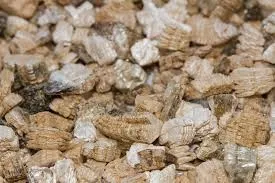Nov . 29, 2024 10:06 Back to list
Exploring the Benefits of Heat-Resistant Insulating Materials for Energy Efficiency
The Importance of Thermally Insulative Materials in Modern Construction
In the realm of modern construction, the quest for energy efficiency and sustainability has led to a growing interest in thermally insulative materials. These materials play a pivotal role in regulating temperature within buildings, ultimately contributing to reduced energy consumption and enhanced comfort for occupants. This article explores the significance of thermally insulative materials, their types, applications, and the benefits they offer in contemporary architecture.
What Are Thermally Insulative Materials?
Thermally insulative materials are substances that resist the transfer of heat. Their primary function is to maintain a stable indoor temperature by minimizing temperature fluctuations. This is especially crucial in climates that experience extreme temperatures. Effective thermal insulation helps keep buildings warm during winter and cool during summer, thereby reducing reliance on heating, ventilation, and air conditioning (HVAC) systems.
Types of Thermally Insulative Materials
There are various thermally insulative materials available, each with unique properties suited for different applications. Common categories include
1. Fiberglass Insulation One of the most widely used insulating materials, fiberglass consists of fine strands of glass that trap air, providing excellent thermal resistance. It is commonly employed in walls, attics, and floors.
2. Foam Insulation This category includes materials like polyurethane and polystyrene foam, which are sprayed or rigidly installed. Foam insulation has a high R-value (a measure of thermal resistance), making it highly effective in sealing gaps and reducing air leakage.
3. Mineral Wool (Rock Wool) Known for its fire-resistant properties, mineral wool is an organic material that provides good thermal insulation while also enhancing sound dampening.
4. Cellulose Insulation Made from recycled paper products, cellulose is an eco-friendly option that offers thermal and acoustic insulation. It is typically treated with fire retardants to enhance safety.
5. Reflective or Radiant Barrier Insulation This type consists of reflective surfaces that prevent heat transfer through radiation, making it particularly effective in hot climates. It is installed in attics to reflect radiant heat away from living spaces.
Applications in Construction
thermally insulative materials

Thermally insulative materials are employed in various parts of a building, including walls, roofs, floors, and even windows. Proper insulation during construction not only enhances the building's thermal performance but also contributes to its overall structural integrity. In modern architecture, designers often integrate insulation into the building envelope to create a tighter seal that minimizes energy loss.
In addition to new constructions, thermally insulative materials are also essential in retrofit projects. Enhancing insulation in older buildings can yield significant energy savings and improved comfort levels for residents. Moreover, during interior renovations, the use of insulative materials can help maintain desired temperatures in specific zones of the home.
Benefits of Using Thermally Insulative Materials
The benefits of thermally insulative materials extend beyond mere temperature regulation. Key advantages include
1. Energy Efficiency By reducing the need for heating and cooling, thermal insulation significantly lowers energy bills and decreases a building's carbon footprint.
2. Enhanced Comfort Proper insulation creates a more stable indoor environment, reducing drafts, cold spots, and noise pollution.
3. Environmental Impact Many insulating materials are now made from recycled or sustainable resources, aligning with green building practices and contributing to LEED certification.
4. Increased Property Value Buildings equipped with advanced thermal insulation are often more attractive to buyers and renters, enhancing their marketability.
5. Compliance with Regulations As energy codes become more stringent, incorporating thermally insulative materials helps ensure compliance with local and national building regulations.
Conclusion
In conclusion, thermally insulative materials play an essential role in modern construction, contributing not only to energy efficiency and occupant comfort but also to the sustainability of the built environment. As we move forward, the continued innovation and integration of these materials will be crucial in addressing the challenges posed by climate change and the demand for more sustainable living spaces. The future of architecture will undoubtedly be intertwined with the effective use of thermally insulative materials, promoting healthier, more efficient, and environmentally conscious buildings.
-
Eco-Friendly Granule Covering Agent | Dust & Caking Control
NewsAug.06,2025
-
Fe-C Composite Pellets for BOF: High-Efficiency & Cost-Saving
NewsAug.05,2025
-
Premium Tundish Covering Agents Exporters | High Purity
NewsAug.04,2025
-
Fe-C Composite Pellets for BOF | Efficient & Economical
NewsAug.03,2025
-
Top Tundish Covering Agent Exporters | Premium Quality Solutions
NewsAug.02,2025
-
First Bauxite Exporters | AI-Optimized Supply
NewsAug.01,2025
